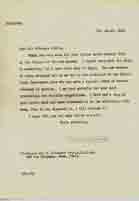
Sir Petrie Suggestion, Mandat Archiv
The museum’s first curator, J.H. Iliffe and others planned an ethnographic exhibit that would display local Arab folklore. Breasted was opposed and with the help of Rockefeller, it was decided that the museum would specialize solely on archaeology with no historical, biological or ethnographic exhibits. A dispute arose when Iliffe wanted to exhibit a placard describing the development of early man. The question was transferred to an expert committee that upheld Rockefeller’s requirement that the museum exhibit only archaeological subjects. Iliffe’s request was rejected.
In the two main galleries, the exhibits were arranged in chronological order beginning with the prehistoric era and continuing until the Middle Ages. The collection, arranged in symmetrical showcases, includes significant finds from major excavations in Eretz-Israel conducted in the early twentieth century. A closet at the base of each showcase holds other items from the same excavations.
There are also several smaller exhibition rooms, each with its special subject: stucco elements and statuary from Hisham’s Palace near Jericho, carved wood doors and panels from the Al-Aqsa Mosque on the Temple Mount; lintels from the Church of the Holy Sepulchre, and still smaller rooms with collections of coins and gold jewelry. An exhibit of objects representing the period of Egyptian rule in Eretz-Israel stands in the southern octagon. The northern octagon holds examples of Jewish culture from the Talmudic period. Architectural elements, stone coffins and sculptures are displayed in the inner arcade on both sides of the pool.
Additional Articles ...